Top of the list were the Partridge Classic Spider hook and Pearsall's silk thread. North country spiders have always had a certain appeal and despite not having the best suited river to fish them on, I'm determined to give them a go this year.
Trying not to tie for tying's sake it is hard to limit the number of different flies that end up in your box; I have found that lacking the materials has curtailed tying too many varieties.
The first fly tied was the Waterhen Bloa, it needs no introduction and is well renowned for being a first class large dark olive imitation; a must for early season. A road kill moorhen that was fresh and in perfect condition was skinned last year for future use, the coverts and under coverts forming the foundation for my spider box.
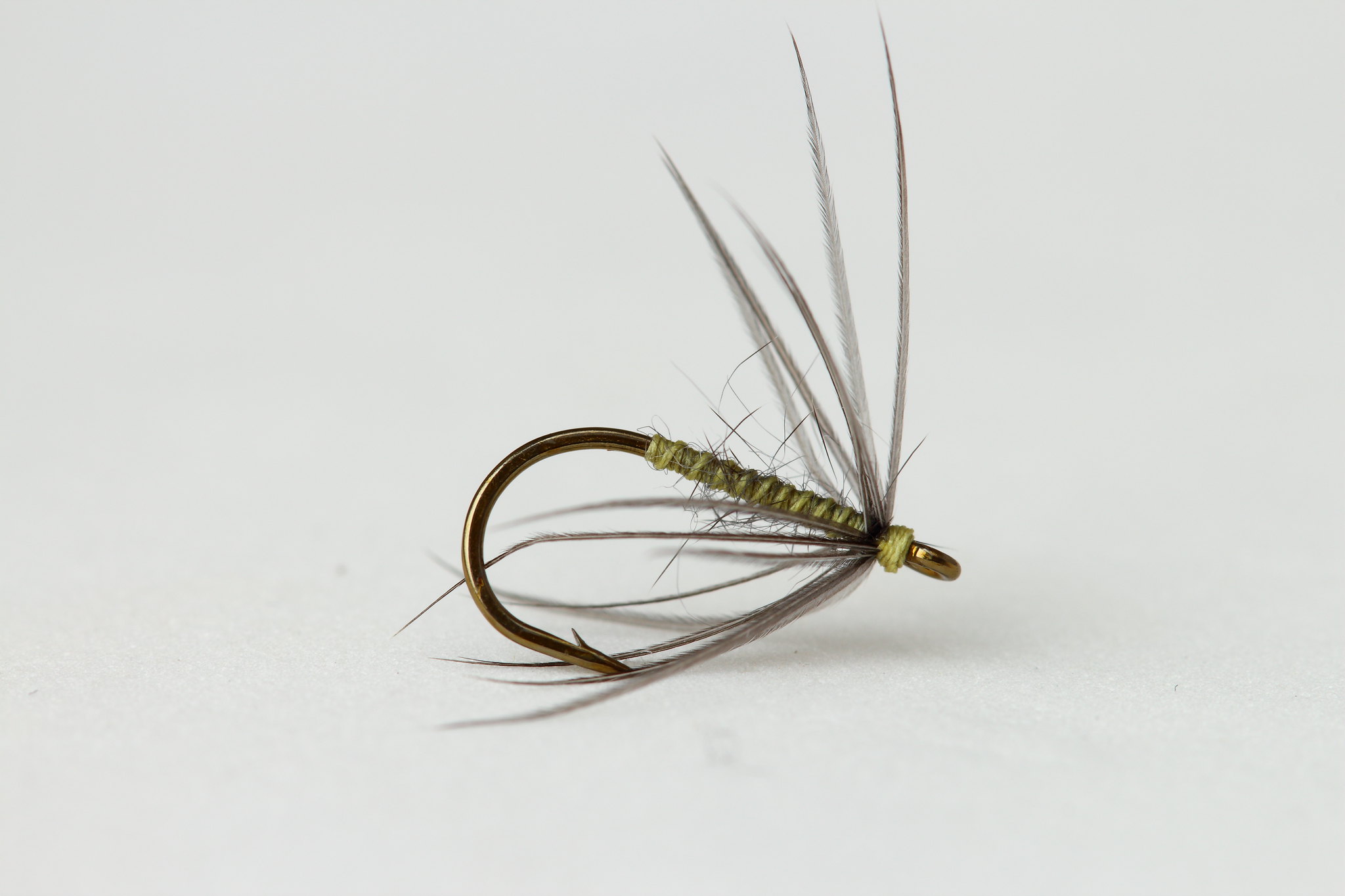 |
| Waterhen Bloa Hook: Partridge Spider sizes 14-16 Thread: Pearsalls silk no. 5 yellow Body: Silk touch dubbed with natural mole Hackle: Moorhen undercovert |
The Waterhen Bloa above was tied with the traditional under covert and whisply dubbed with mole. The pearly-butt version below was tied with the darker, more olive upper (marginal) covert and a slightly more heavily dubbed body - this creates an overall darker fly; both are tied with Pearsall's no. 4 yellow silk thread.
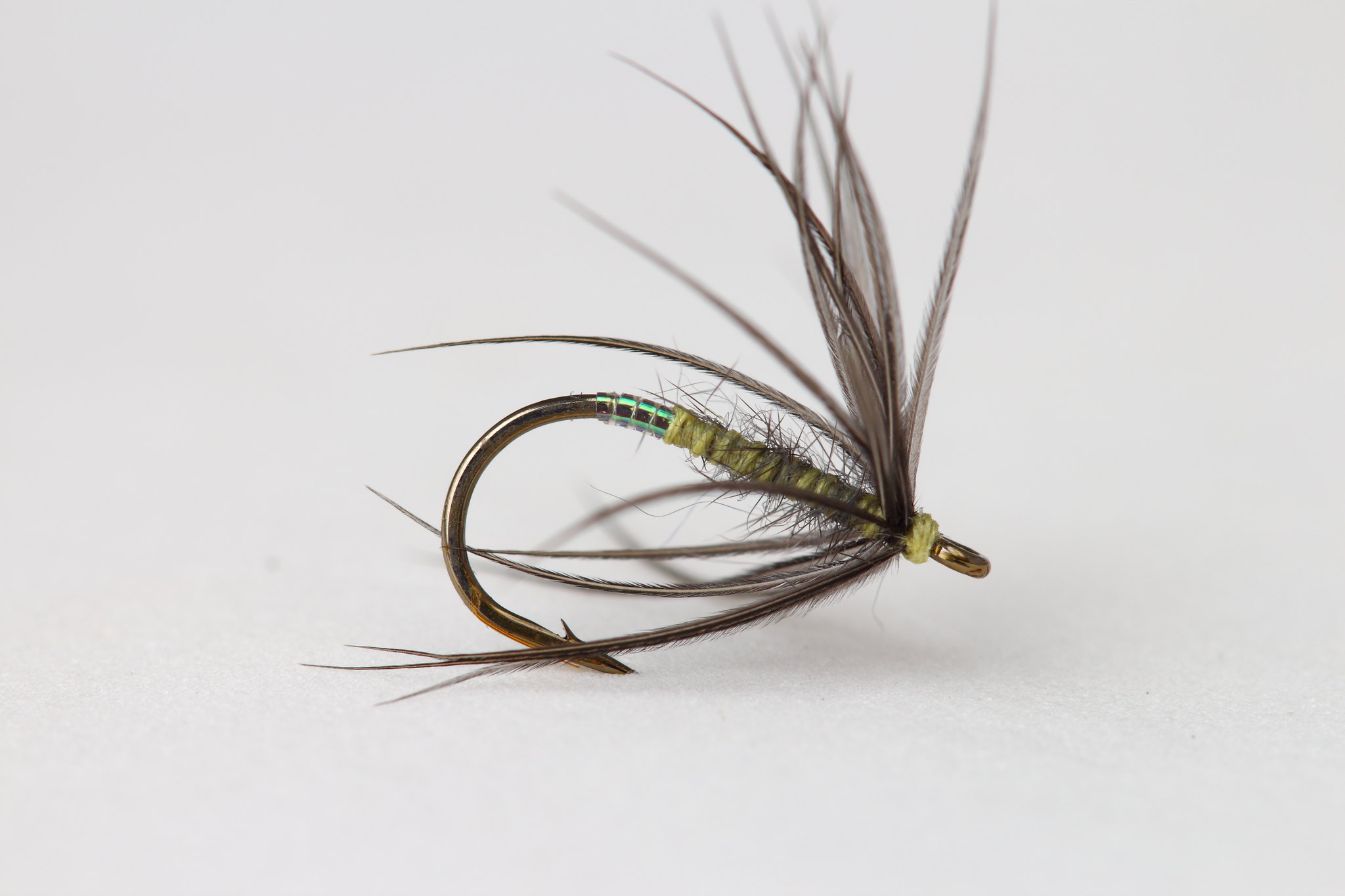 |
| Pearly-butt Bloa Hook: Partridge Spider sizes 14-16 Tag: Fine pearl tinsel Thread: Pearsall's silk no.5 yellow Body: Silk touch dubbed with natural mole Hackle: Moorhen marginal (upper) covert |
Another equally famous spider is the Partridge and Orange. There is much debate as to which orange silk thread should be used. I have chosen the brighter orange no. 19 instead of the 6a which is also used.
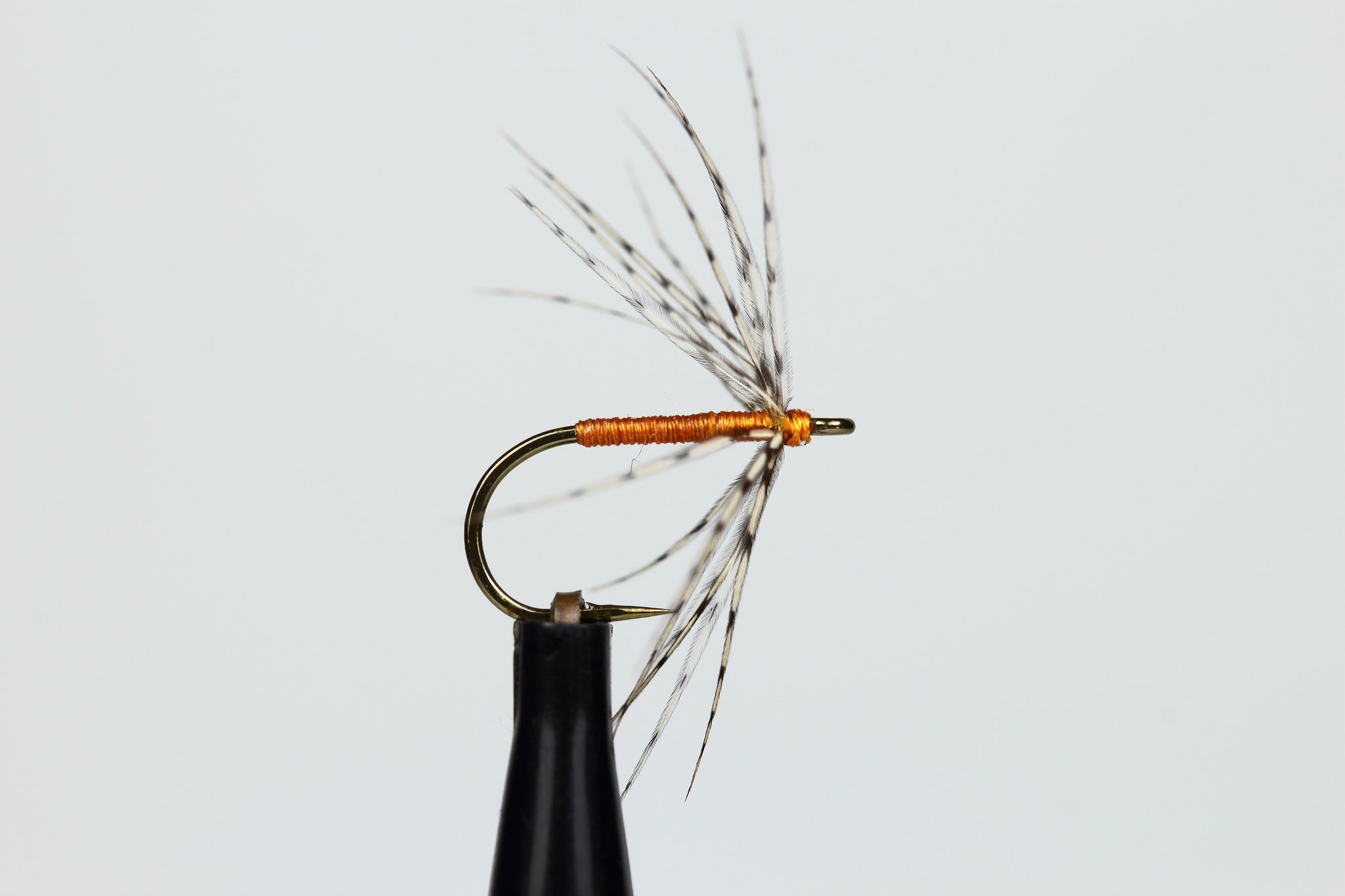 |
| Partridge and Orange Hook: Partridge Spider sizes 14-16 Thread: Pearsall's silk no.19 hot orange Body: Silk thread Hackle: Partridge |
I bought a couple of books from the Coch-y-Bonddhu book stand. Bob Wyatt's What Trout Want has been on my must read list for some time now and another book that caught my eye was only released that weekend. The North Country Fly: Yorkshire's soft hackle tradition by Robert Smith really caught my eye. A quick flick through sealed the deal and money was exchanged for a signed copy. Inside I found a selection of superbly tied wet flies and one in particular caught my eye; even better I had the materials to tie it - a deviation from my list saw my by a pair of coot wings which forms part of the next fly.
The Little Dark Watchet can be considered gaudy as far as spiders go and it is certainly eye catching.
Another classic spider representing the small black end of the spectrum is Stewart's Black spider. Strangely you would think, that given it's name it would be tied with black thread but no, waxed brown silk is used and combined with the starling hackle, gives the fly its black appearance.
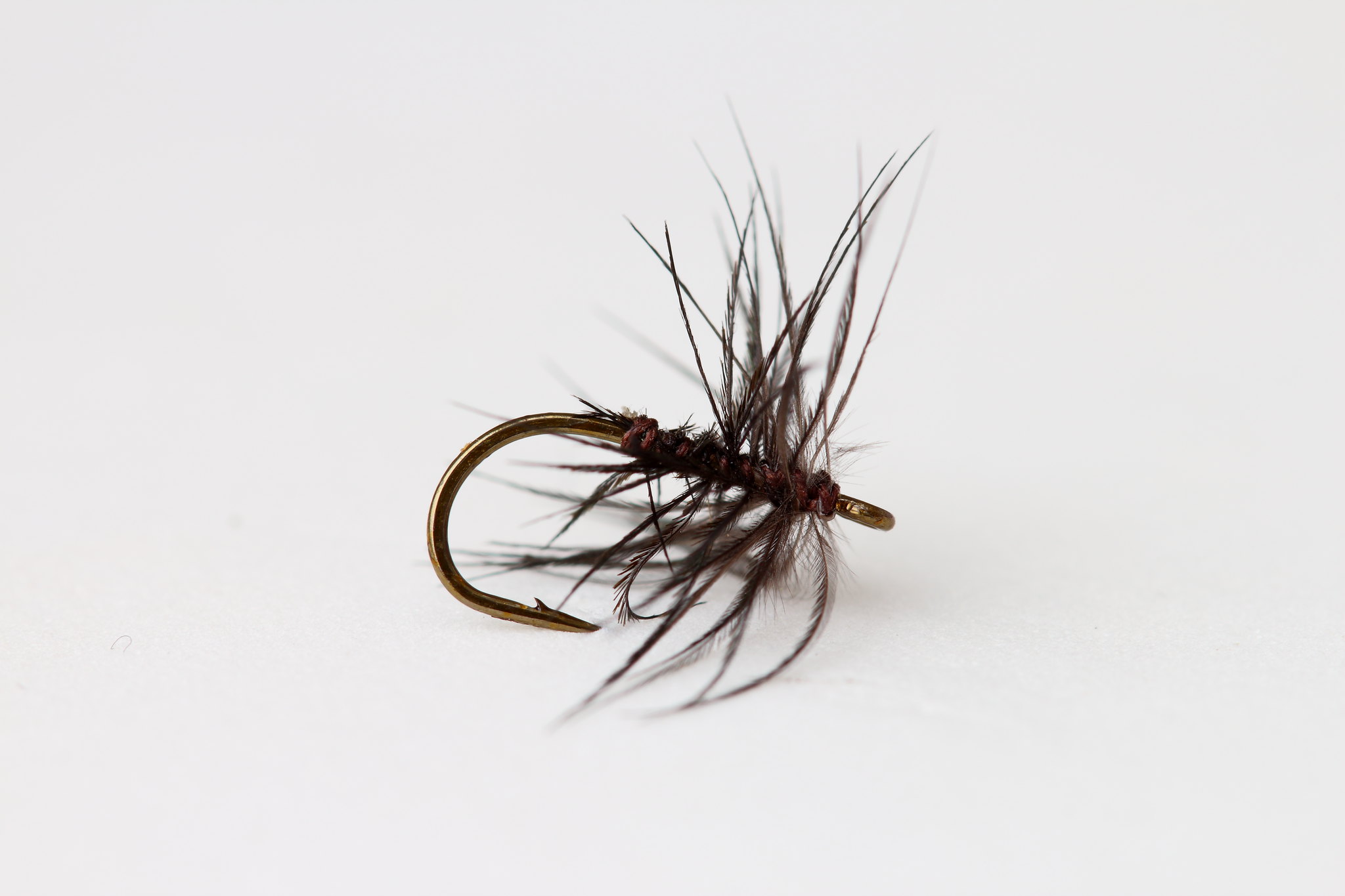 |
| Stewart's Black Spider Hook: Partridge Spider sizes 14-20 Thread: Pearsall's silk no.17 brown Body: As silk Hackle: Starling wrapped around silk and palmered down the hook shank |
A slight deviation from the north country spiders theme, but still connected by the use of silk for tying thread; the JT olive is a simple and proven pattern for imitating upwings. I tie with a slight variation - I use silk to tie the whole fly instead of yellow thread. This is a bit of a nod to the Waterhen Bloa which it is superficially similar too.
However it isn't the JT olive I'm really revealing, but a fly I saw on Paul Procters excellent and well overdue blog here (it's been a year now Paul!). It resembles the JT olive in shape and construction and I felt it would do well given the same treatment of silk instead of thread. Imitating the diminutive and seductively dark iron blue dun, the Iron Blue Cul follows the same proven formula as the JT olive and Jeremy Lucas' Plume tip.
I have tied this with Pearsall's no. 15 dark claret silk touch dubbed with mole and Troutline slate cdc for the wing, this gives the dark appearance needed to replicate the IBD; all I need now is to come across a hatch of them, at least I'll be prepared if I do.
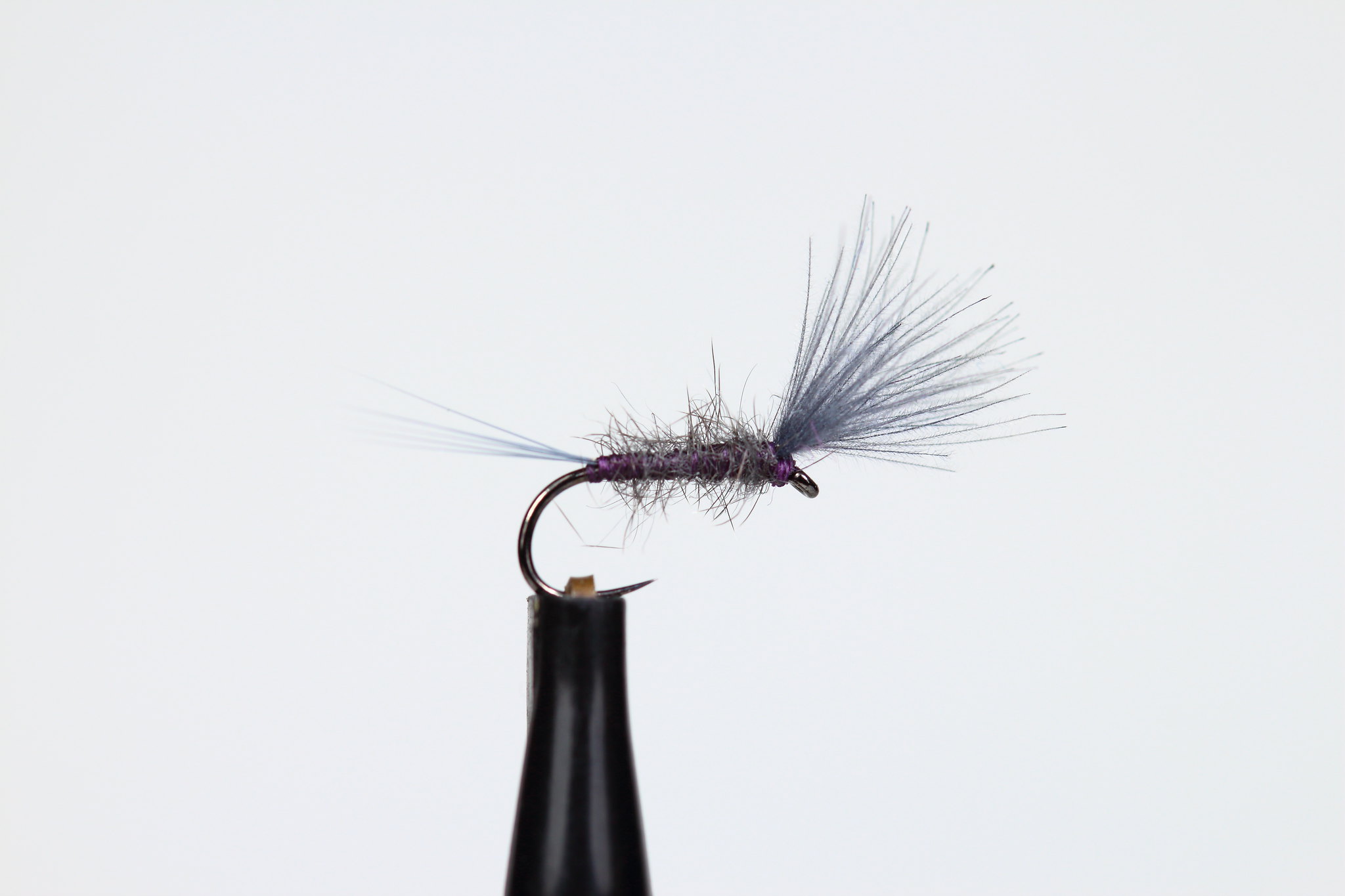 |
| Iron Blue Cul Hook: Partridge SLD sizes 18-20 Thread: Pearsall's silk no.15 dark claret Tail: Dark dun microfibbets Body: Silk over-dubbed with natural mole Wing: Troutline CDC slate |
Having digressed away from spiders, my interpretation of an iron blue spider follows the same principle as the IBC by utilising the same silk and mole dubbed body. I found a fantastically coloured dark dun hen hackle on the Cookshill stand and this finished the spider off perfectly.
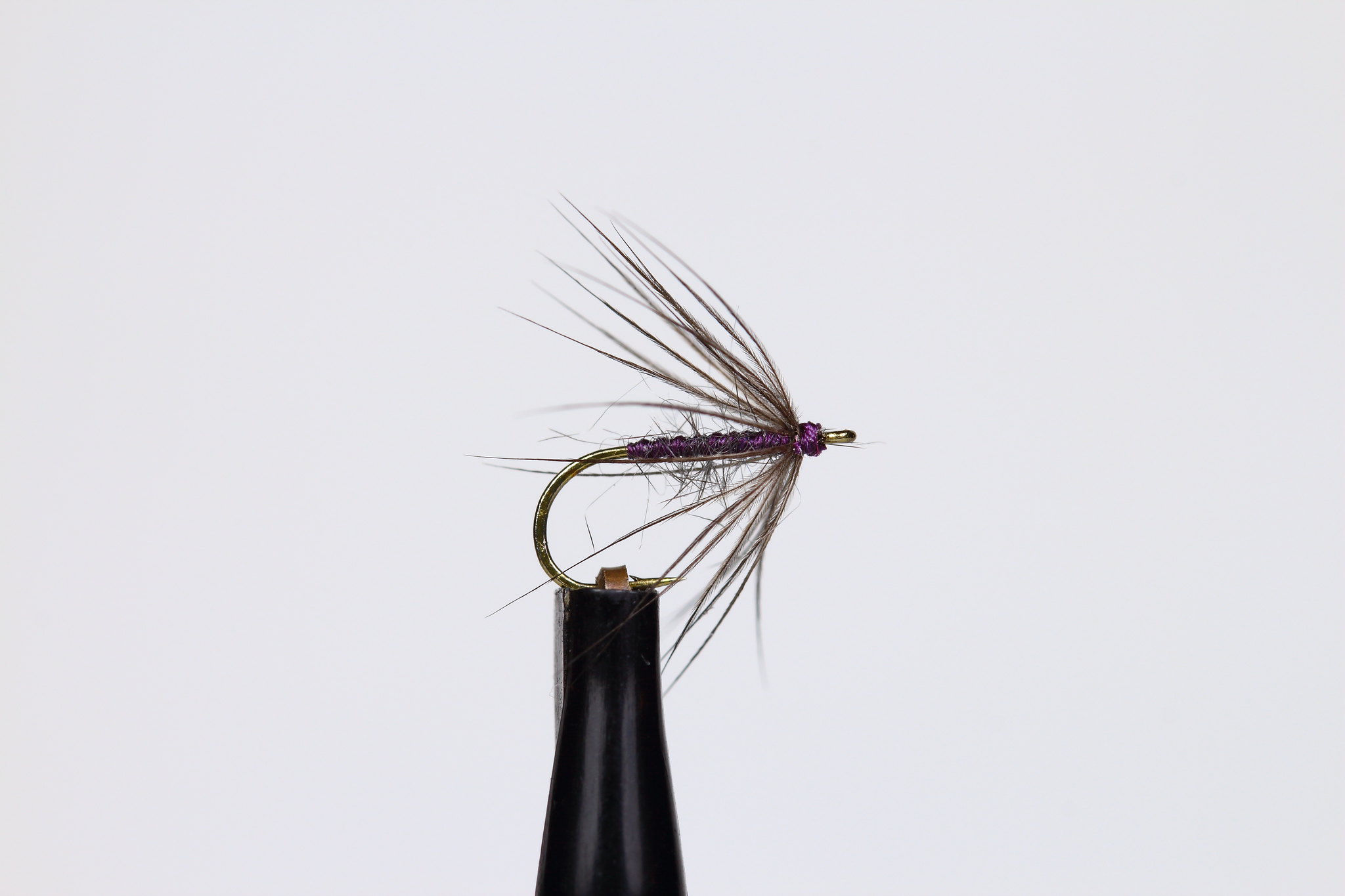 |
| Iron Blue Spider Hook: Partridge Spider sizes 16-18 Thread: Pearsall's silk no.15 dark claret Body: Silk touch dubbed with natural mole Hackle: Dark dun hen |
I purchased four sizes of the Partridge spider hook - 12 to 18 - it wasn't until I unloaded all my goodies at home that it became obvious the size 12's were particularly large. It was a struggle to think of any flies that could be tied on them; I will experiment and perhaps come up with a mayfly spider as this may be the only thing that will look right. I did however try a fly on the size 12, a Sturdy's Fancy which incidentally suits this style of hook, has so far been the only one.
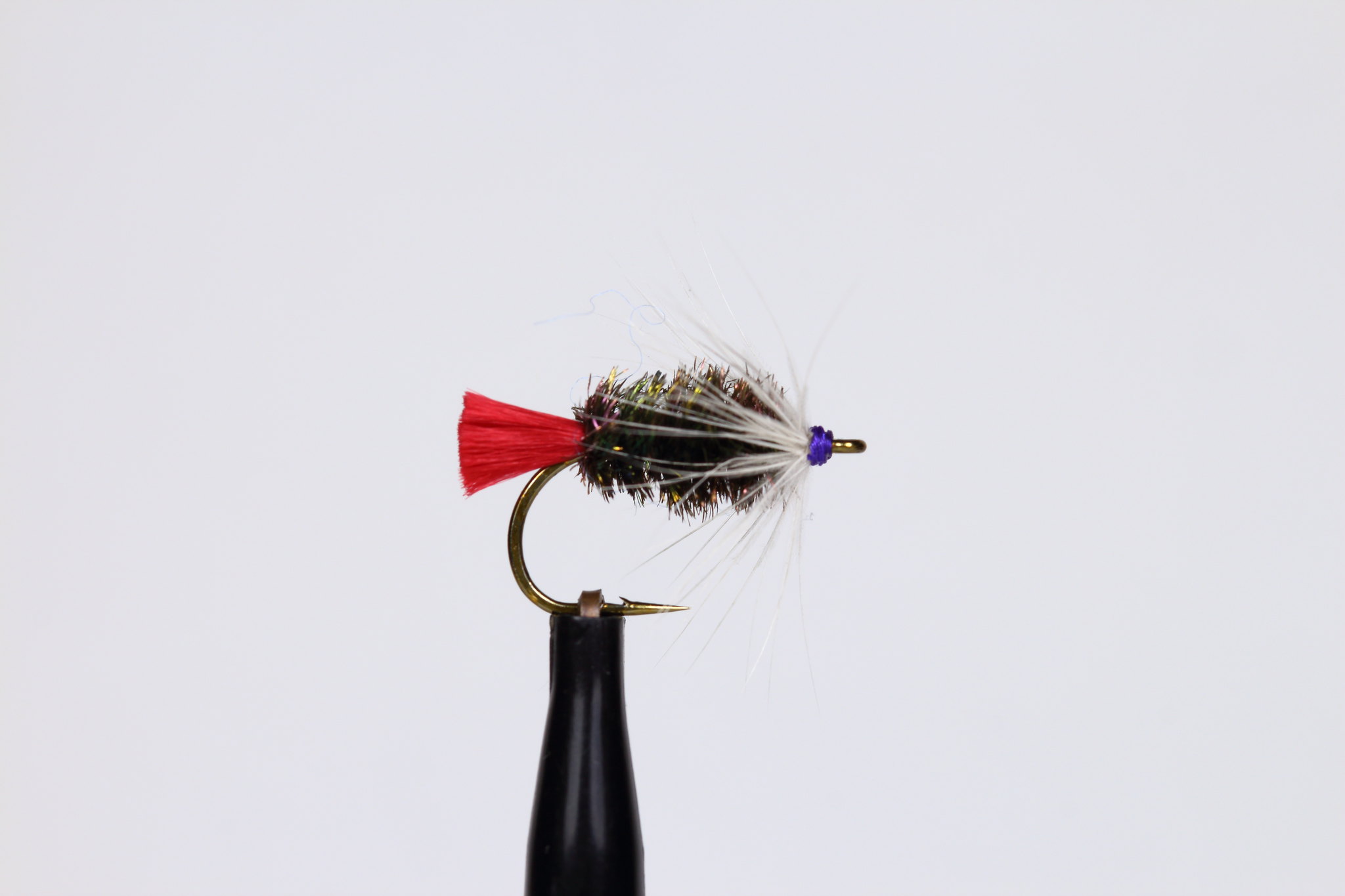 |
| Sturdy's Fancy Hook: Partridge Spider sizes 12-16 Thread: Pearsall's silk no.8 purple Tail: Red floss Body: Peacock herl Hackle: White hen Head: Pearsall's silk no.8 purple |
The last fly I have tied on the spider hooks is a Tweed style Greenwells Glory, taking instruction from Oliver Edwards Wet Fly Fishing on Rivers DVD, I found the starling primary quill feather troublesome to tie with, although with a little persistence I succeeded in tying a small batch of them. Another treat from the Cookshill stand was the Bailey wax collection - I bought all three - and used the cobblers wax to colour the no. 4 silk.
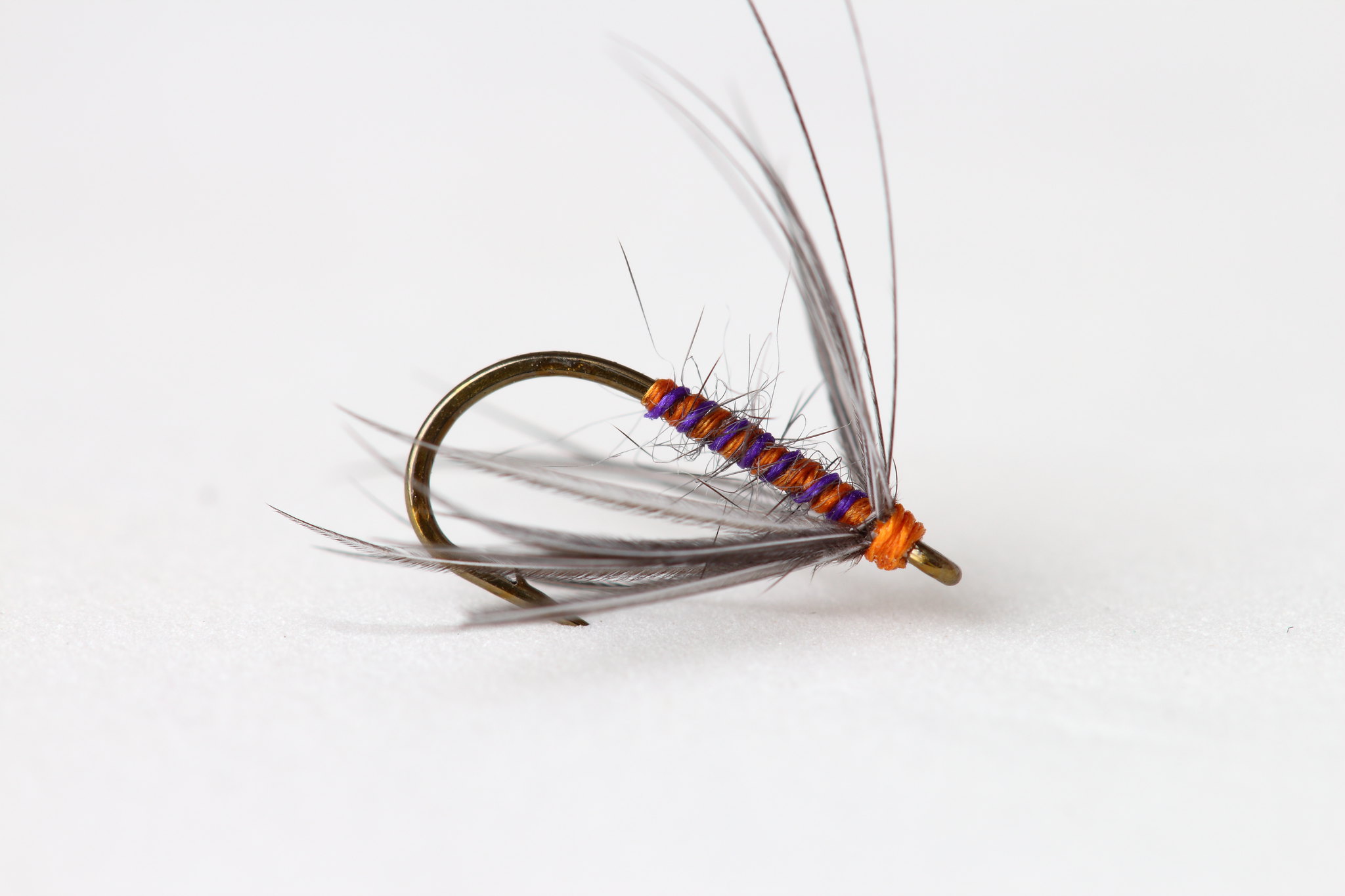
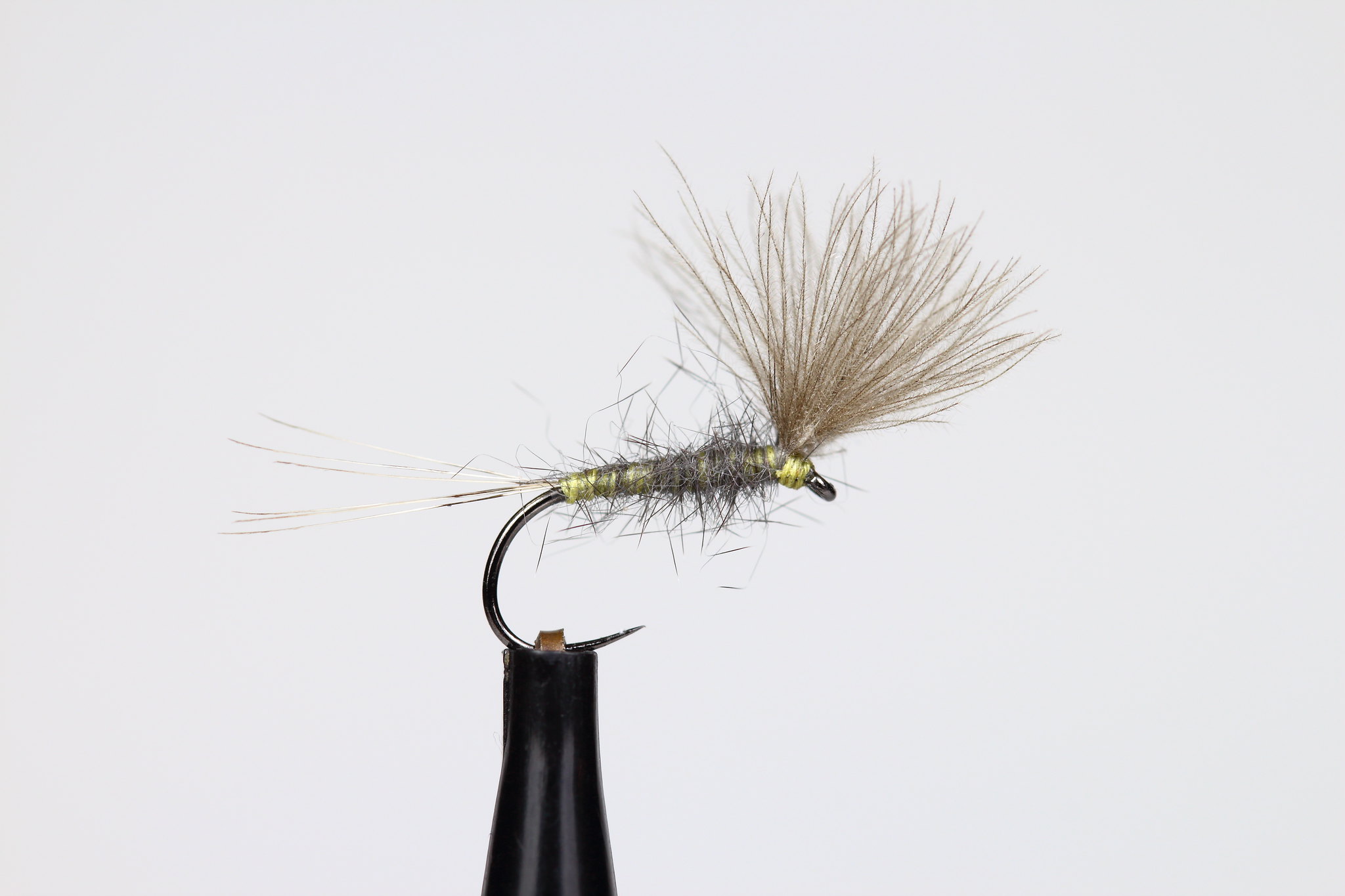
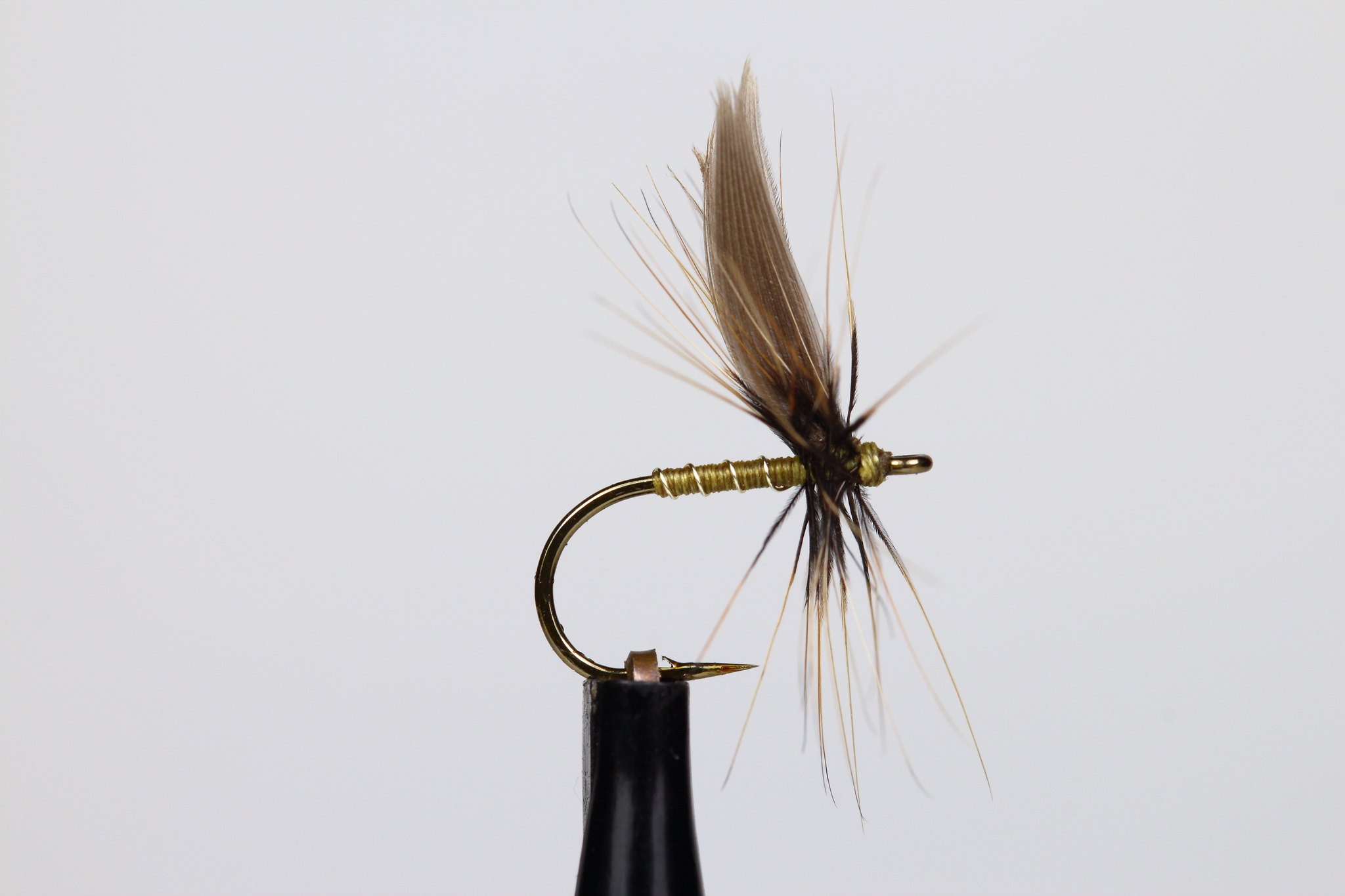
Hi Ben, what beautifully tied flies. I fish wet fly a lot on my Northern rivers and streams. As an aside, I prefer the Dark Watchett to the Snipe and Purple as a a copy of the IBD nymph and I have reverted to the hackle version of the Greenwell as opposed to the winged version for the LDO. Excellent post
ReplyDeleteThank you Peter, I really enjoyed tying these, even the wings on the Greenwells. I really hope I can put them to use this coming season.
DeleteA good day it was too Ben and you've certainly done your purchases justice
ReplyDeleteHappy with the flies but not so with the photography, really need to sort out the lighting.
Delete